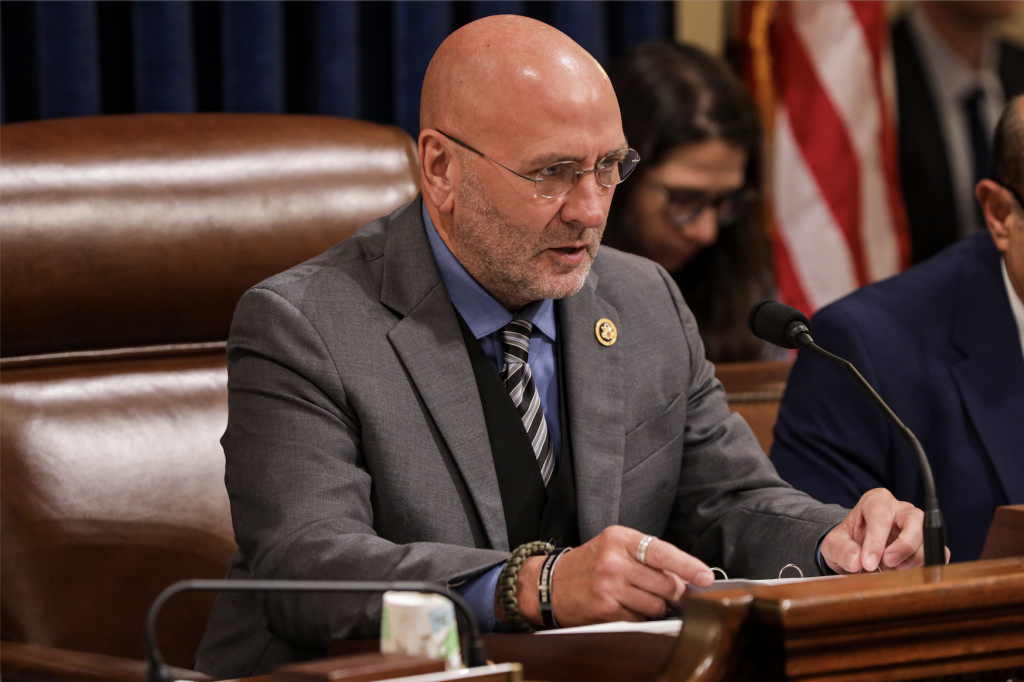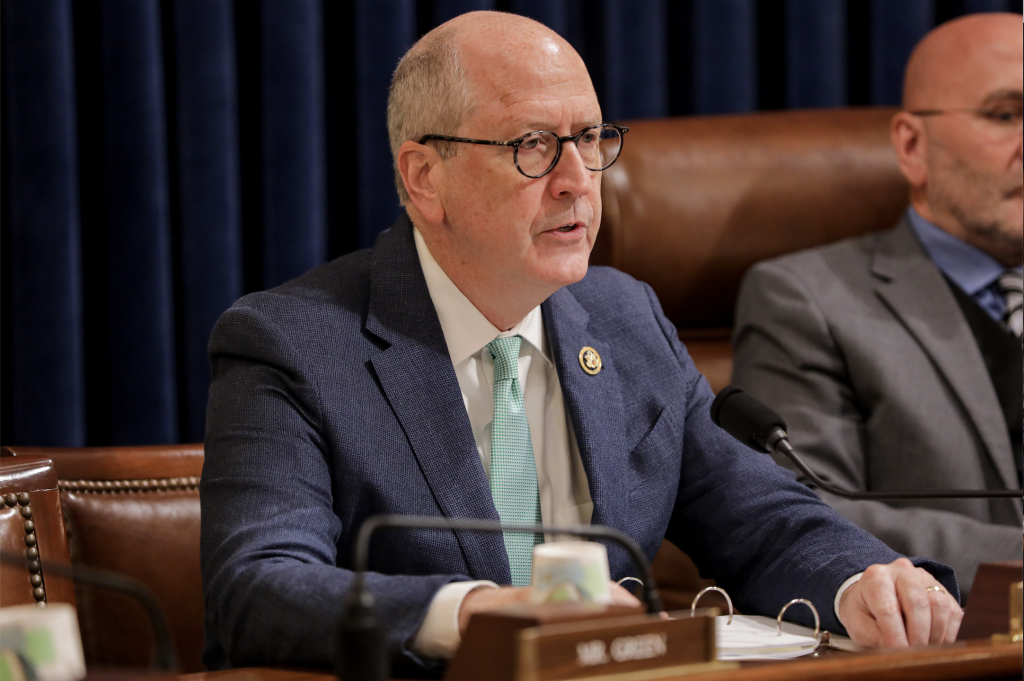Chairmen Higgins, Bishop Open Joint Hearing: Border Security Technologies “Play a Critical Role” In Countering Threats, Mass Illegal Immigration
July 9, 2024
WASHINGTON, D.C. — Today, House Homeland Security Subcommittee on Border Security and Enforcement Chairman Clay Higgins (R-LA) and Subcommittee on Oversight, Investigations, and Accountability Chairman Dan Bishop (R-NC) delivered opening statements in a joint subcommittee hearing to examine the potential for emerging technology to enhance the border security mission. Since President Biden and now-impeached Department of Homeland (DHS) Security Secretary Alejandro Mayorkas took office, there have been more than 9.7 million encounters nationwide and more than 7.9 million encounters at the Southwest border. It is critical that lawmakers and the American people understand the challenges facing DHS law enforcement at our borders, and the technologies necessary to safeguard them.

Watch Subcommittee Chairman Higgins’ full opening statement.
As prepared for delivery:
Good afternoon and welcome to the Subcommittee on Border Security and Enforcement and the Subcommittee on Oversight, Investigations, and Accountability joint hearing on technology’s role in enhancing our border security.
The crisis at our southern border poses an existential risk to our nation. To combat this threat, emerging border security technologies play a critical role in deterring criminal activity and the mass illegal immigration that we have witnessed under the Biden administration.
Illegal immigration has surged to an unprecedented level with approximately 9.7 million illegal aliens who have crossed our borders since President Biden took office. This is more than double the entire population of my home state of Louisiana.
The influx of fentanyl and other deadly drugs is destroying American families and communities. The latest data shows that in the past year, approximately 13,000 pounds of fentanyl have been seized at the Southwest border. Cutting-edge technology is crucial in interdicting these dangerous substances and apprehending drug traffickers.
Furthermore, dangerous cartels continually exploit vulnerabilities in our border security. DHS’s partnership with the private sector is crucial in leveraging the most advanced technologies available to identify, track, and respond to these threats on land, air, and sea.
We have a responsibility to our nation to use every tool and technology at our disposal to protect our homeland from these threats.
DHS’s deployment of emerging technologies is necessary to combat the illegal movement of aliens, drugs, weapons, and other illicit commodities from crossing the United States border.
As transnational criminal organizations and terrorists constantly seek new methods to penetrate the vulnerable border, these innovative technologies are essential in countering these evolving threats, including the use of cartel drones and coyote smuggling operations.
The commercial security industry has always played a vital role in protecting America’s homeland. Private sector investments in new technologies have enabled components such as Customs and Border Protection (CBP) to strategically deploy personnel and technology to maximize the agency’s effectiveness and fulfill its mission.
I would like to express my gratitude to our witnesses for appearing before the Committee today to discuss how DHS works with industry to provide advanced solutions to our law enforcement personnel on the ground, emblematic of the many private partners working with DHS to secure our homeland.
Border security technology will never replace frontline agents and officers. However, technology can be a critical tool to aid law enforcement personnel carry out their mission. The need for advanced technology will continue to grow, as well as the need for personnel readiness to defend our nation.
With that, I yield back the balance of my time and look forward to hearing from our witnesses.

Watch Subcommittee Chairman Bishop’s full opening statement.
As prepared for delivery:
Good afternoon and thank you to our witnesses for joining us today to share insights on how the Department of Homeland Security can partner with the private sector for technological solutions to enhance border security.
As Chairman of the Subcommittee on Oversight, Investigations, and Accountability, I have no doubt of the critical need for DHS to take advantage of technologies to increase the operational effectiveness of the agents responsible for securing our nation’s borders.
These technologies act as a force multiplier for CBP agents in the field, providing them with greater situational awareness and enabling more efficient use of CBP resources.
For example, the deployment of autonomous surveillance towers, unmanned aerial systems, and other surveillance technology along the border facilitates real-time monitoring for potential threats, especially in remote areas that are more difficult for Border Patrol agents to cover.
We know that there have been more than 1.8 million gotaways at the border since January 2021, including 194,000 since October, 2023. That’s a major national security crisis. Using technology to detect and prevent these threats must be a critical priority.
In a 2021 report, however, the DHS Inspector General found that CBP lacked sufficient personnel to fully leverage surveillance technology advances.
Using artificial intelligence can help alleviate the manpower issue. Enabling surveillance and processing tools to operate with greater autonomy can reserve time for agents to review the most imminent threats. Automating previously labor-intensive tasks also helps free Border Patrol agents to be back out in the field to safeguard the homeland.
Similarly, the use of non-intrusive screening equipment and facial recognition technology at land ports of entry plays a critical role in protecting the homeland while facilitating lawful trade and travel.
A recent Inspector General report also found that because of limitations in camera technology, CBP had only a 76 percent success rate in capturing images of vehicle passengers at ports of entry. And, of those captured, only 81 percent were of sufficient quality to conduct adequate screenings.
Staying on the cutting edge of technology is vital to national security and defending our border, particularly as cartel tactics and use of technology have become increasingly advanced.
In recent years, we’ve seen cartels routinely deploy sophisticated and widely available drones to conduct countersurveillance on Border Patrol to advance their smuggling operations.
In February of last year, Chief Sector Patrol Agent Chavez testified that the Rio Grande Valley sector had experienced over 10,000 drone incursions in a single year. It is not hard to imagine that cartels have increased the frequency of incursions since then.
In transcribed interviews with the Committee, multiple Sector Chiefs affirmed that cartels seek to exploit any perceived vulnerabilities to facilitate human and drug smuggling across the border between ports of entry. CBP’s adoption and implementation of advanced C-UAS technology is crucial to denying cartels the ability to freely operate drones across the border.
The House majority emphasized the importance of border technology when it passed the border security bill, H.R. 2, requiring CBP to present a 5-year strategic technology investment plan that lists security technology priorities needed to address risks and capability gaps. The bill also requires CBP to provide clear goals and timelines for implementing their technology priorities.
H.R. 2, also requires CBP to take steps to streamline the acquisition process and increase partnerships and consultation with the private sector to ensure that CBP is well-informed on technological advances and innovations relevant to the border security mission.
The CBP Innovation Team has legislative authority to fast-track technology projects up to $25 million dollars. As CBP considers and pilots new technologies, it is important to define success and identify performance metrics to ensure that money is spent efficiently and effectively.
According to the Government Accountability Office, as of July 2022, the CBP Innovation Team invested more than $120 million in 73 cutting-edge technology pilot projects. At the time of the report, however, the team had not clearly derived strategic-level goals or quantified performance goals to assess progress.
In an environment as fast-paced and crucial to homeland security as the southern border, it is imperative to identify metrics for success in implementing new technologies. It is my hope that our witnesses can help identify these metrics and performance goals so Congress can conduct meaningful oversight over CBP’s technology investments.
Of course, technology can’t replace the need for Border Patrol agents, a border wall, and the basic will to enforce our immigration laws. It’s not a silver bullet to solve the border crisis, but it can help the men and women of Border Patrol to be more effective in carrying out their mission of securing America’s borders.
Today’s hearing is about how DHS can work with the private sector to deliver smarter security and ensure that taxpayer dollars are being used for the greatest effect. I look forward to an informative hearing with our witnesses
###
